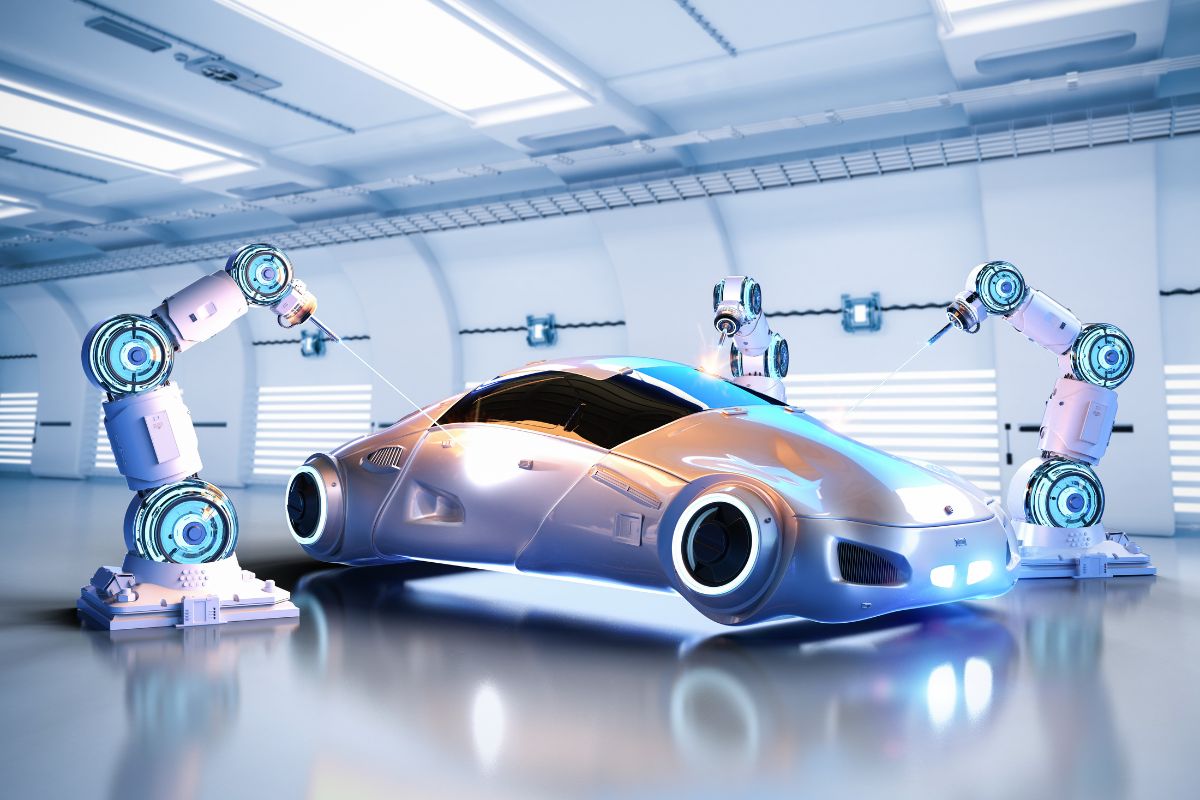Industry 4.0: The Dawn of Smart Manufacturing and Automation

As we stand at the threshold of a new industrial revolution, often referred to as Industry 4.0, the landscape of manufacturing and production is experiencing a profound transformation. Characterized by the integration of digital technologies, automation, and data exchange, Industry 4.0 marks a significant shift towards smart manufacturing. This article explores the key elements, benefits, challenges, and future prospects of Industry 4.0 in shaping the future of manufacturing.
Understanding Industry 4.0
Industry 4.0 represents the fourth industrial revolution, following the earlier stages characterized by mechanization (Industry 1.0), mass production (Industry 2.0), and automation (Industry 3.0). It leverages advanced technologies such as the Internet of Things (IoT), artificial intelligence (AI), big data analytics, robotics, and cloud computing to create interconnected systems that enhance production processes.
Key Components of Industry 4.0
Internet of Things (IoT): The IoT refers to the network of interconnected devices that communicate and share data. In manufacturing, IoT enables real-time monitoring of equipment, supply chains, and production processes, leading to improved efficiency and decision-making.
Big Data Analytics: With the vast amounts of data generated in manufacturing, big data analytics allows companies to extract valuable insights. Analyzing data helps identify patterns, optimize operations, and predict maintenance needs, ultimately enhancing productivity.
Artificial Intelligence (AI) and Machine Learning: AI algorithms can analyze complex data sets, automate processes, and make informed decisions. Machine learning enables systems to learn from past experiences, continually improving their performance and accuracy over time.
Robotics and Automation: Advanced robotics are integral to Industry 4.0, enabling increased precision, speed, and flexibility in manufacturing processes. Collaborative robots (cobots) work alongside human operators, enhancing productivity while maintaining safety.
Cloud Computing: Cloud technologies facilitate the storage and processing of vast amounts of data, enabling manufacturers to access information anytime, anywhere. This flexibility supports remote monitoring, collaboration, and scalability.
Benefits of Industry 4.0
The adoption of Industry 4.0 technologies offers numerous advantages for manufacturers, including:
Increased Efficiency and Productivity: Automation and real-time monitoring optimize production processes, reducing downtime and waste. Manufacturers can achieve higher output levels while minimizing operational costs.
Improved Quality Control: Advanced analytics and IoT devices enable continuous monitoring of product quality. Manufacturers can identify defects early in the production process, ensuring that only high-quality products reach the market.
Enhanced Flexibility and Agility: Smart manufacturing systems can quickly adapt to changes in demand and market conditions. Manufacturers can efficiently scale production up or down, respond to customer preferences, and customize products.
Predictive Maintenance: IoT sensors and data analytics allow manufacturers to predict equipment failures before they occur. By addressing maintenance needs proactively, companies can reduce downtime and extend the lifespan of machinery.
Sustainability and Resource Efficiency: Industry 4.0 promotes sustainable practices by optimizing resource use and reducing energy consumption. Manufacturers can track their environmental impact and implement strategies to minimize waste.
Challenges in Implementing Industry 4.0
Despite the numerous benefits, the transition to Industry 4.0 presents several challenges that manufacturers must navigate:
Integration of Legacy Systems: Many manufacturing facilities still rely on outdated systems. Integrating new technologies with legacy systems can be complex and costly, requiring careful planning and execution.
Data Security Concerns: As manufacturing becomes more interconnected, the risk of cyberattacks increases. Protecting sensitive data and ensuring cybersecurity measures are in place is crucial for maintaining trust and operational integrity.
Skill Gaps and Workforce Training: The shift to smart manufacturing necessitates a skilled workforce capable of operating and maintaining advanced technologies. Manufacturers must invest in training programs to upskill employees and attract new talent.
High Initial Investment: Implementing Industry 4.0 technologies often requires significant upfront investments. Small and medium-sized enterprises (SMEs) may struggle to secure the necessary funding, hindering their ability to compete in the market.
Change Management: Transitioning to a smart manufacturing model involves cultural shifts within organizations. Resistance to change among employees can pose a barrier to successful implementation, necessitating effective change management strategies.
The Future of Smart Manufacturing
As Industry 4.0 continues to evolve, several trends are expected to shape the future of smart manufacturing:
Increased Adoption of AI and Automation: AI will play a central role in automating complex tasks and enhancing decision-making. The collaboration between humans and machines will redefine the workforce, leading to more efficient and productive operations.
Expansion of Digital Twins: Digital twin technology allows manufacturers to create virtual replicas of physical assets. This enables real-time monitoring, predictive maintenance, and scenario testing, enhancing overall operational efficiency.
Sustainable Manufacturing Practices: The emphasis on sustainability will drive the development of eco-friendly manufacturing processes. Companies will adopt circular economy principles, focusing on reducing waste and maximizing resource utilization.
Collaborative Ecosystems: The future of manufacturing will involve greater collaboration among industry stakeholders. Manufacturers, suppliers, and customers will work together to create innovative solutions, share data, and optimize supply chains.
Enhanced Customer Experience: The integration of smart technologies will enable manufacturers to provide personalized experiences to customers. Data-driven insights will allow companies to anticipate customer needs and tailor products and services accordingly.
Conclusion
Industry 4.0 represents a paradigm shift in manufacturing, driven by advancements in technology and data analytics. The transition to smart manufacturing and automation offers numerous benefits, including increased efficiency, improved quality control, and enhanced flexibility.
However, manufacturers must also address challenges such as integration, data security, and workforce training to fully realize the potential of Industry 4.0. By embracing these transformative changes, businesses can position themselves for success in an increasingly competitive and dynamic marketplace.
As we move forward into this new era of manufacturing, the dawn of smart manufacturing and automation promises to revolutionize the industry, paving the way for a more innovative, efficient, and sustainable future.
Uncover the latest trends and insights with our articles on Visionary Vogues
Note: IndiBlogHub features both user-submitted and editorial content. We do not verify third-party contributions. Read our Disclaimer and Privacy Policyfor details.







